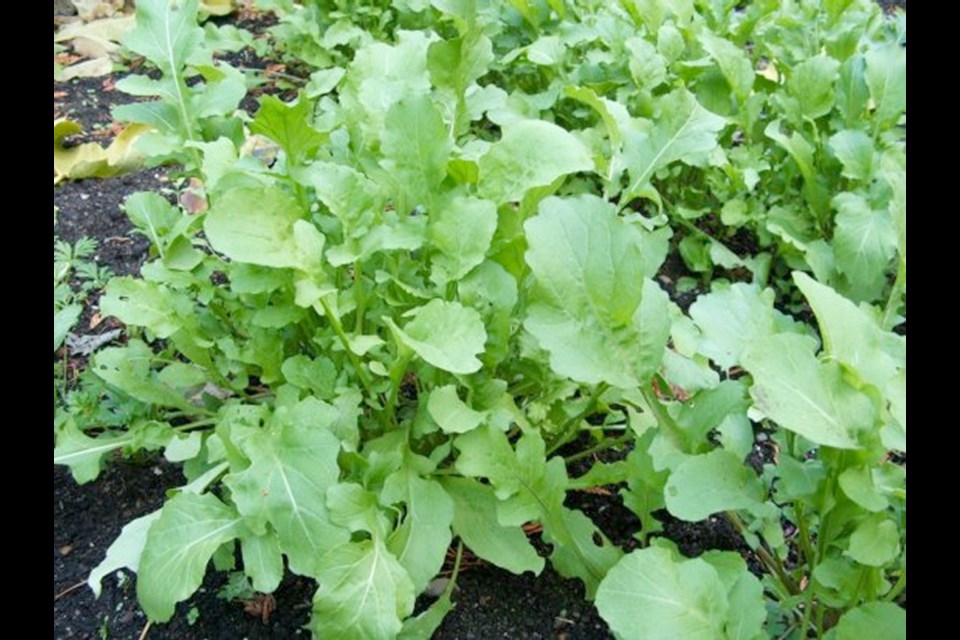Dear Helen: As arugula appeared in local markets in the spring, I began eating it almost daily and enjoying its pungent flavour. Then I bought some seeds, after hearing it was easy to grow. My plantings grew quickly, with an abundance of leaves that were bitter enough to be almost inedible. Why? I grew several varieties, all with the same result.
J.D.
Dear J.D.: For tender, pleasantly piquant greens, arugula needs a fertile, humus-rich, consistently moist soil and cool growing conditions. Seedings made very early in the spring and in late summer work best, unless there are summer sites available that stay cool and moist.
Harvesting the leaves young is important. Cut them while they are still around 10 centimetres long. The cut-back plants will yield a second crop of tasty greens.
Dear Helen: After reading about your plan to put an amaryllis plant outside for the summer, I wanted to tell you that I have pink amaryllis plantings that stay in the ground year-round. They bloom beginning in late August and are fragrant. Are they the same as Nerine Lily? My bulbs multiply mightily.
A.Y.
Dear A.Y.: The flower most of us think of immediately as amaryllis is actually Hippeastrum (Hip-e-AST-rum) — the big bulbs we buy, usually in the fall, to pot for Christmas flowers. There is a wide choice in bloom colour, though red and white are likely most popular. ‘Apple Blossom’ is a lovely pink and white form.
A true amaryllis is Amaryllis belladona (naked lady, garden amaryllis, magic lily), which produces thick, metre-tall, naked stems bearing fragrant, silky pink flowers in August and September, long after the plants’ leaves have died back. The broad, ribbon-like foliage appears in early spring and is gone by midsummer. The big bulbs are well positioned between leafy perennials that camouflage the dying leaves and frame the nude flower stems.
Though slightly tender, Amaryllis belladona bulbs in my garden have done well in warm, sunny sites with a light, sandy soil. They form massive clumps in time. I think this is what you have.
Nerine (spider lily, Guernsey lily) blooms later. Depending upon the variety, site and microclimate, they can bloom from mid-September to well into November. My plantings are from bulbs lifted from my father’s garden in Sidney. They are the standard pink-flowering Nerine bowdenii, with blooms in October and November.
Each flowerhead holds a showy cluster of blossoms with narrow, crinkled petals that curve backward. They grow and flower best in sunny, warm, sheltered locations.
Dear Helen: I’ve had some success keeping white cabbage butterflies away from cabbage and broccoli by planting marigolds around them and setting a potted orange mint plant nearby. Is there any other method that helps to deter the butterflies from laying eggs on the plants?
P.C.
Dear P.C.: White cabbage butterfly females lay eggs on cabbage family plants from early spring through September, through three or more generations. The only way to be sure of excluding them completely from susceptible plantings, especially where they are present in high numbers, is to cover the plantings with insect mesh or floating row cover fabric. This is what I do. The covering also excludes cabbage flies, preventing them from laying eggs on the soil beside the plant stems. Resulting larvae feed in the roots, causing wilting, stunting, and sometimes death by root rot.
Masking the scent of target plants, as you have done with aromatic marigolds and mint, often works well when low numbers of the pest are present. I’ve also had good results draping developing cauliflower, broccoli and cabbage heads with pungent tomato suckers freshly removed from the tomato plants.
Some gardeners interplant carrots and onions to deter both the carrot fly and the onion fly. That doesn’t work in my garden. I need to cover both.
Dear Helen: I have a giant, yellow-flowering, unknown plant in my garden. The tall spire grew from a rosette of soft, woolly leaves in the spring.
J.O.
Dear J.O.: I believe your plant is great mullein (Aaron’s rod, Verbascum thapsus, common mullein), a tall biennial flower with yellow, five-petaled flowers borne in a dense spike. Well suited to dry soil and sunny sites, it self-sows freely in congenial conditions.
Common mullein is considered a weed, and is subject to statutory control in parts of Australia. Here, it is not so very aggressive and is usually restricted to roadsides, disturbed areas and pastures. Still, I’d consider carefully before allowing the plant to set and mature seeds.
